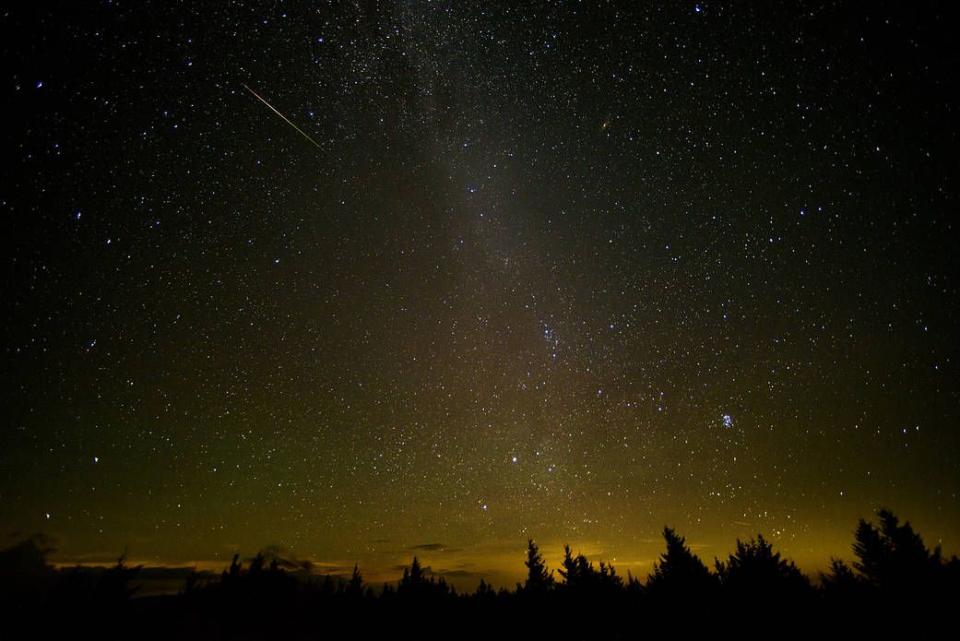The Quadrantid Meteor Shower Peaks This Week

As Earth zips along its orbit, it slides through the dusty trails of asteroids and comets. These are what we’ve come to know as meteor showers. There are nine main meteor showers that can be witnessed around the world throughout the year and are named after the constellations across which they streak.
Meteoroids, which burn up in the atmosphere, can be as small as a dust grain or as large as a small asteroid. Once they hit Earth's surface, they're called meteorites. On most nights, astronomy buffs will witness a handful of meteors, but during a meteor shower there could be as many as 140 meteors visible per hour.
The Next Meteor Shower: The Quadrantids

The bone-chilling winter months are marked by the Quadrantids meteor shower, which is active from Dec. 26 to Jan. 16 but peak during the late evening and early hours of Jan. 2-3. Despite occurring at a time when the sky is likely to be socked in with clouds, the Quadrantids are considered to be one of the strongest meteor displays of the year.
Unlike other meteor showers, which peak over the course of two days, the Quadrantids' peak is shorter and lasts a few hours. But thanks to an optimal lunar phase, they should be especially visible this year. Viewers in the Northern hemisphere (and as far south as 51 degrees south) can expect to see, at peak, as many as 60-120 meteors in the sky each hour, according to NASA.
These bright meteors typically emanate from the constellation Quadrans Muralis, a part of the constellation Boötes. The dust trails that cause many meteor showers are fed by comets. We can thank the mysterious "rock comet" 2003 EH1, which has so far eluded a more precise definition, for this dazzling celestial display.
If your view of the sky becomes socked in by clouds, you can still catch the cosmic fireworks via the NASA Meteor Watch Facebook page.
Where Do Meteor Showers Come From?
As comets and asteroids approach the sun, ice melts and they begin to shed dust and rock. Asteroids, however, stop shedding material as the sail away from the sun. In December 2019, astronomers revealed at the American Geophysical Union Fall Meeting in San Francisco, California, that another famed meteor shower, the Geminids, are also sourced by an asteroid, called 3200 Phaethon.
All meteor showers seem to originate from one region in the sky. This is usually the constellation they are named after. For example, the Perseids originate in the constellation Perseus and the Orionids originate in the constellation Orion. The Quadrantids, are named for an obsolete constellation no longer officially recognized by the International Astronomical Union called “Quadrans Muralis.”
When Are All the Other Meteor Showers?
In addition to the nine primary meteor showers, Earth may also swing through the tail of the broken comet 73P/Schwassmann-Wachmann 3 this year, spurring a meteor shower between May to early June called the Tau Herculids.
Quadrantids
Active: Dec. 26, 2021 to Jan. 16, 2022
Peak: Jan. 2 to 3
Lyrids
Active: Apr. 15 to 29
Peak: Apr. 21 to 22
Eta Aquariids
Active: Apr. 15 to May 27
Peak: May 4 to 5
Southern Delta Aquariids
Active: Jul. 18 to Aug. 21
Peak: Jul. 29 to 30
Perseids
Active: Jul. 14 to Sept. 1
Peak: Aug. 11 to 12
Orinionids
Active: Sept. 26 to Nov. 22
Peak: Oct. 20 to 21
Leonids
Active: Nov. 3 to Dec. 2
Peak: Nov. 17 to 18
Geminids
Active: Dec. 4 to 17
Peak: Dec. 13 to 14
Ursids
Active: Dec. 17 to 26
Peak: Dec. 22 to 23
You Might Also Like

